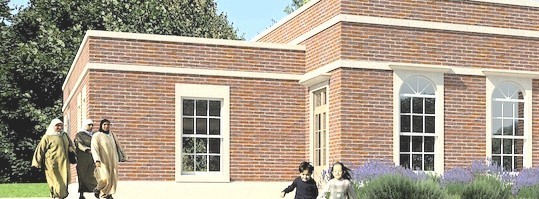 Issue No: 148
Issue No: 148
18th January 2013
6th Rabiul Awwal 1434 A.H.
Salamun alaykum,
Why did you migrate?
Humans are in constant process of migration. Like other communities, we too have undertaken the process of migration for various reasons. The objectives for this translocation range from pursuit of education, refuge from violence, tyranny, freedom to practice ones faith, seeking employment, economic gain or in one way or the other to have a better way of living. The net result of this process of migration is that a transformation in one’s life is taking place.
Hijra: A turning point:
By announcing the message of Tawhid – Unity of God- and Nubuwwat – Prophethood- amongst the aristrocratic society of the Quraysh in Makka, the Noble Prophet had set into motion the journey of establishing a community submitting in obedience to the Divine message of Islam. This was a turning point for the new muslims. They were undergoing a hijra (emigration) from the practices of idol worship to the submission to Allah SWT. This was the hijra of the self- the nafs.
In the current month of Rabi ul Awwal the Noble Prophet Muhammad SAWW migrated from Makka to Yathrib, later renamed Madina. This hijra took place during the 13th year since commencement of prophetic mission (B’ithat), based upon Divine instructions.
By undertaking the Hijra (migration) from Makka, the Noble Prophet did not just transfer his residence to seek refuge or take shelter in another city. As soon as he arrived in Yathrib / Madina he commenced the transformation of that city, the society and undertook a process to establish a faithful community.The transformation in society was led by the Prophet when he himself worked in carrying the stones for construction of the Masjidun Nabi. This small, humble building became a powerful structure which served as a focal point of all activities for the community.
For not only was Masjidun Nabi a space for performing prayers and learning (madrasah), it became a platform for establishing a dynamic community.
This had a great impact on the society. The shape of the society was changing where the new muslims who had renounced disbelief and idol worship were now living side by side with non muslims, as neighbors, in the society of idol worshippers. The period of life which the Noble Prophet and the budding muslim community passed among the hard-hearted people of Makka was not without its severe challenges from the Quraysh pagan arabs.
Notwithstanding the hostile and unwelcome behavior from their neighbors, the Noble Prophet always exhorted the muslims to maintain cordiality with their neighbors.
“Maintain good relations with your neighbors that you may be (proven to be) a muslim.” Prophet Muhammad SAWW.
This signifies the maintaining of pleasantness with ones neighbors to be an indicator of one’s level of Eiman - submission to Islam. Guided by this commandment the muslims slowly, but surely had an impact on their neighbors in the society, both in Makkah and Madina.
Having entered into the 1434th year since the Hijra, our situation today as muslims living in a minority amongst people of other faiths and no faiths is no different to the early muslim community who undertook the hijra.
The question to ask is how successful is the hijra of the nafs? How committed has one become to Islam, to live devotedly as a muslim and what impact does one have on the neighbors in the wider community?
Does one bring joy and pleasure to the noble Prophet Muhammad SAWW?
Wa ma tawfiqi illa billah
Fazle Abbas Datoo
This email address is being protected from spambots. You need JavaScript enabled to view it.
Resident Alim
Wessex Shia Ithna Asheri Jamaat
